What is GLP-1 muscle loss? It’s more serious than most people think. As a Registered Dietitian with over 25 years of experience, I’ve guided clients through every stage of life. From prenatal and postpartum nutrition to managing heart disease, diabetes, and hypertension, I’ve seen how closely these conditions tie into weight. I have also seen how complicated weight loss can be, especially when you throw medications into the mix.
The Truth About GLP-1 and Muscle Loss
GLP-1 injections like Ozempic and Mounjaro were originally developed to manage patients with type 2 diabetes. They work by mimicking glucagon-like peptide 1, a hormone that helps regulate blood sugar, improve insulin sensitivity, and reduce appetite. These actions not only support glucose control but also improve metabolic function for patients with diabetes, which can lead to changes in body composition.
While these drugs have shown promise in helping individuals manage their weight, it’s important to understand that changes on the scale don’t just reflect fat loss, they also affect muscle mass and overall metabolic function.
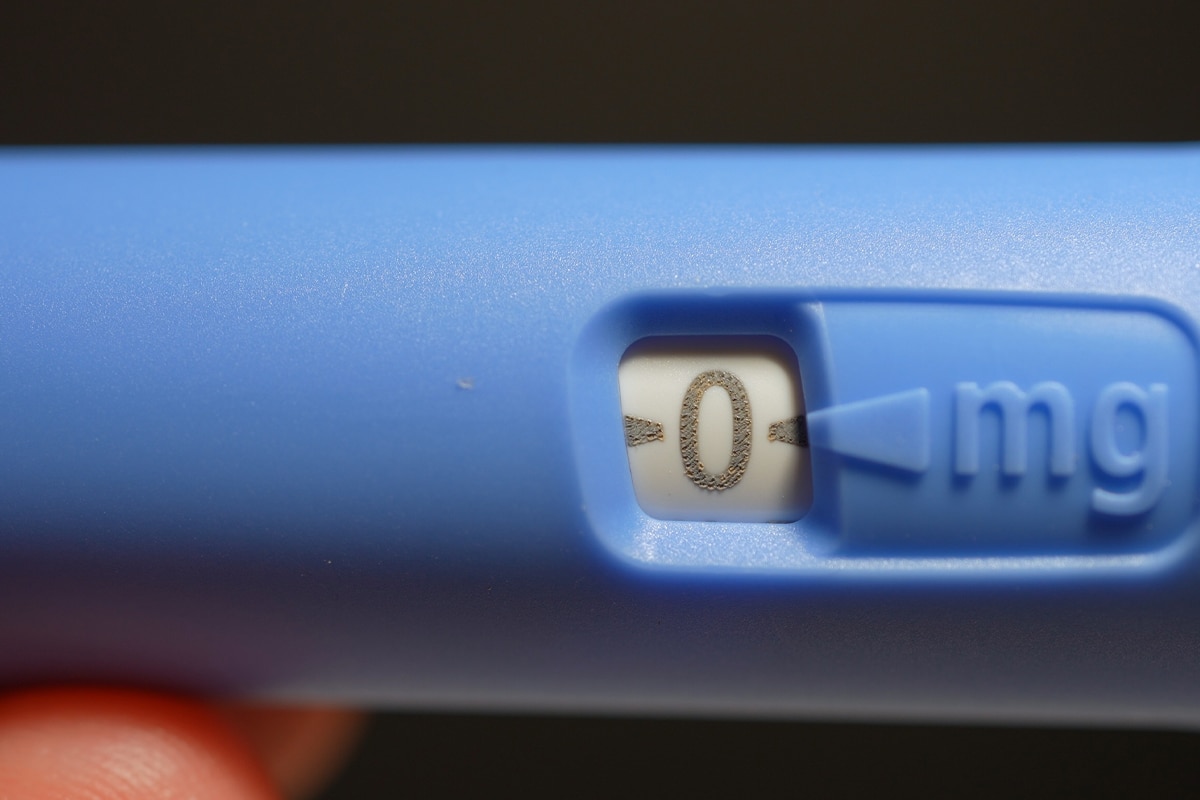
The SURMOUNT-1 trial found that people using Mounjaro (tirzepatide) maintained an average weight loss of 19.4 percent over three years. That’s not a small number.
Wegovy, for example, is specifically approved for weight loss and follows a structured dose escalation schedule. It’s manufactured by Novo Nordisk, the same company behind Ozempic. Both drugs are part of the GLP-1 receptor agonist family and have been shown to support significant fat loss when used alongside a healthy lifestyle.
The dosage starts at 0.25 mg per week and gradually increases to a maintenance dose of 2.4 mg by week 16. This higher dose is designed to support more significant weight loss. In clinical trials, people taking Wegovy lost an average of 15 to 18% of their body weight over 68 weeks. By comparison, those on Ozempic lost about 6 to 10% of their body weight.
Both have shown potential in improving insulin resistance and helping overweight individuals reduce fat mass. But what often gets overlooked is the effect they can have on your muscles.
But here’s the part no one is talking about: losing weight doesn’t just mean fat loss. It often includes a loss of fat free mass, especially skeletal muscle mass, which plays a key role in strength, metabolism, and mobility.
According to recent research in The Lancet, up to 39 percent of the weight people lose on these drugs can come from lean mass. Yes, muscle. The stuff that keeps your metabolism humming, your bones strong, and your body moving with ease.
One of my clients lost over 30 pounds in just three months. On paper, it looked like a win. But she came to me saying she felt weak, tired, and couldn’t keep up with her usual workouts. That’s when the red flags went up.
GLP-1s can be beneficial, especially for individuals dealing with obesity-related health issues. However, they aren’t magic. Without a comprehensive treatment plan that includes balanced nutrition, physical activity, and strategies to preserve and increase skeletal muscle mass, you might be losing more than just fat—and increasing your chances of weight regain down the road.

Rapid Weight Loss: The Double-Edged Sword
GLP-1 meds like Ozempic and Wegovy are known for one thing: fast results. Clinical trials have shown that people can lose up to 15 percent of their body weight in just over a year. Some studies even report weight loss over 20 percent with higher doses. Sounds impressive, right? But here’s the part most people aren’t talking about. That rapid drop in weight isn’t just fat leaving the body.
A significant portion of that loss, up to 39 percent, can come from lean mass. That’s right. Not just fat tissue, but muscle. And that’s a problem.
Muscle is your metabolic engine.
Losing too much too fast can lead to muscle wasting and tip your body into what we call a state of undernutrition.
Let me break that down. Most people are dropping pounds, but many are doing it in a way that leaves them undernourished and weaker than when they started. That’s not just a side effect. That’s a serious health risk, especially for those managing obesity or other chronic conditions like insulin resistance.
I’ve seen similar concerns in people undergoing bariatric surgery, where the focus has shifted from just losing weight to preserving muscle and monitoring for fat infiltration in the muscles, which can make you weaker, even if you’re technically “lighter” on the scale.
And here’s the other part no one puts in the fine print. You need to stay on this medicine to keep the weight off. That means long-term use, long-term cost, and long-term dependency. As soon as you stop, the weight often starts creeping back. This is why I always say that weight loss meds are a tool. They are not a plan.
If the number on the scale is dropping but you’re feeling weaker, and you’re not supporting your body with proper nutrition or exercise, it’s time to rethink what true “success” looks like.
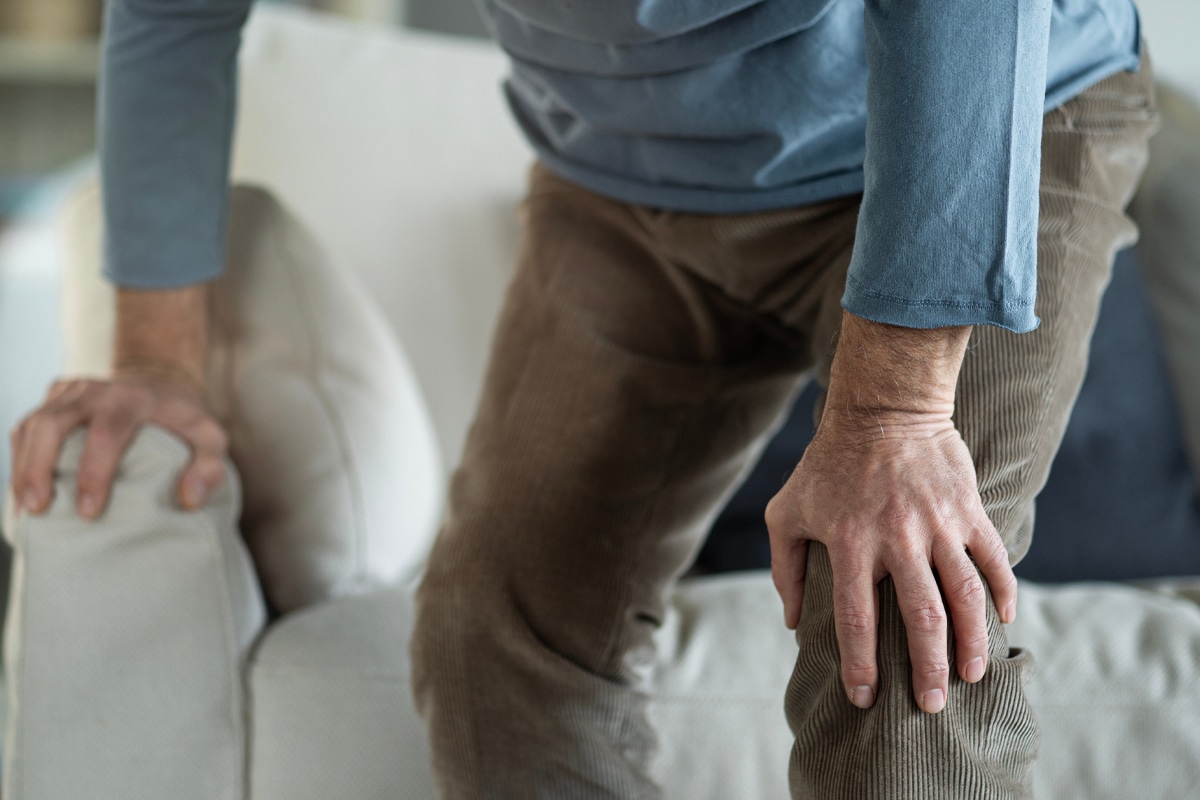
Loss of Muscle Mass: Why You Should Care More Than the Scale
When it comes to shedding pounds, it’s easy to fixate on the numbers dropping on the scale. But here’s the truth: not all weight loss is created equal. Losing muscle mass along with fat can have significant implications for your overall health, strength, and physical function.
Understanding Lean Muscle Mass
Lean muscle mass isn’t just about aesthetics or physical strength; it’s a vital component of your body’s functionality. Muscle tissue plays a crucial role in:
- Metabolism: Muscle burns more calories at rest compared to fat, aiding in weight management.
- Mobility and Balance: Adequate muscle strength helps maintain balance and reduces the likelihood of falls.
- Bone Health: Muscles support bone density, decreasing the likelihood of osteoporosis.
The Impact of Age on Muscle Mass
Starting as early as your 30s, muscle mass begins to decline naturally. According to research, muscle mass decreases approximately 3–8% per decade after the age of 30, with the rate of decline accelerating after 60. This is known as sarcopenia, and it’s one of the sneakiest threats to healthy aging. Less muscle means more fatigue, increased risk of falls, slower recovery from illness, and more trouble living independently.
The good news? Sarcopenia is not inevitable. With the right treatment, one that includes consistent exercise and adequate nutrition, you can slow or even reverse muscle loss.
Sarcopenia, can lead to:
- Reduced Strength: Making everyday tasks more challenging.
- Increased Risk of Falls: Leading to potential injuries.
- Decreased Independence: Affecting the ability to live independently.
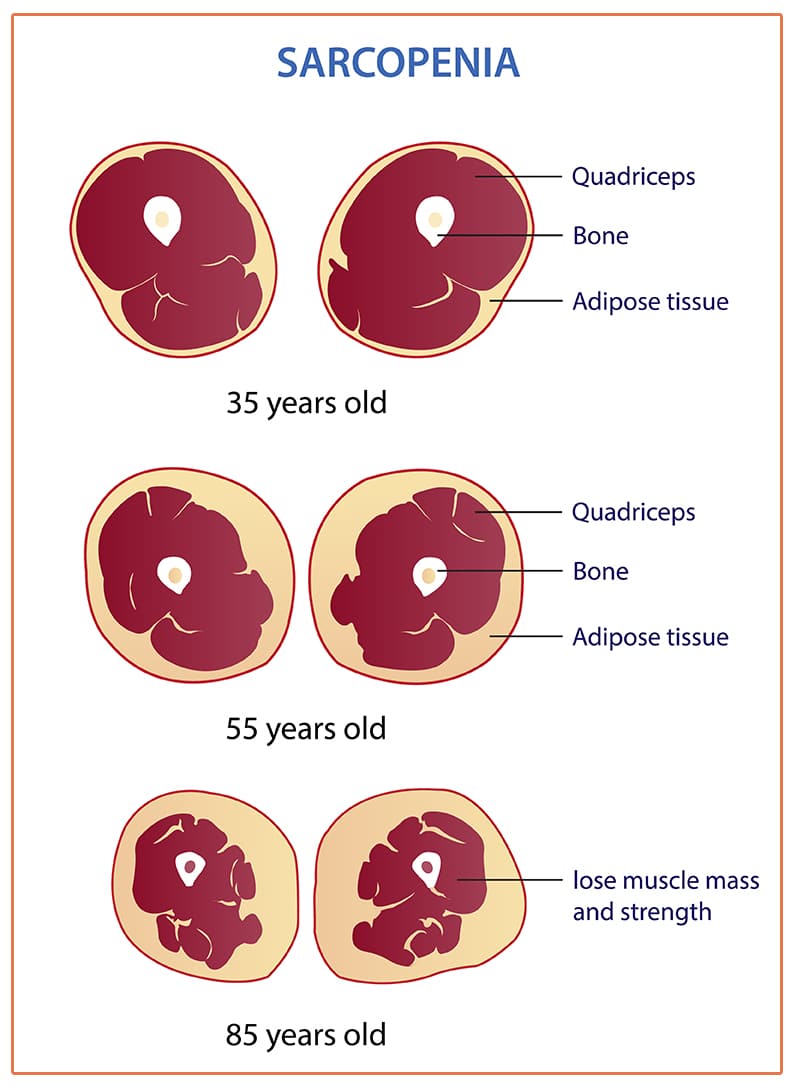
Why Muscle Matters More as You Age
As we age, our bodies naturally become less efficient at building and preserving muscle. That means we have to work harder to hang on to the strength we already have.
Muscle keeps you mobile, stable, and sharp. It helps prevent frailty, boosts your immune system, and gives you the stamina to keep doing the things you love, whether that’s gardening, chasing grandkids, or dancing at weddings.
Losing muscle doesn’t just change how your body looks. It changes how your body works.
Quality Over Quantity in Weight Loss
Focusing solely on the number on the scale can be misleading.
Preserving lean mass while reducing fat is important for:
- Sustained Weight Loss: Muscle helps maintain a higher metabolic rate.
- Functional Independence: Ensuring you can perform daily activities with ease.
- Long-Term Health: Supporting overall health and reducing chances of chronic conditions linked to muscle loss.
A protein rich diet, combined with resistance training, is one of the most effective ways to maintain muscle as your body changes. And as I often tell my clients, “If the scale drops but you can’t lift a grocery bag, that’s not winning.” Prioritizing muscle preservation is key to achieving not just a lighter body, but a stronger, healthier one.

GLP-1 Drugs and Muscle Loss: What’s Really Happening?
GLP-1 drugs like Ozempic and Wegovy work by mimicking a hormone that helps regulate appetite. They slow down how quickly your stomach empties and send signals to your brain that you’re full sooner, which leads to eating less. That’s how the weight comes off, but it’s not always the kind of weight you want to be losing.
Does GLP-1 cause muscle loss?
Yes, it absolutely can. Studies show that around 30 to 40 percent of the weight people lose on these drugs can come from lean muscle. That’s a big deal, especially as we get older and can’t afford to lose what little muscle volume we already struggle to hang onto.
Why does GLP-1 cause muscle loss?
The short answer? These drugs kill your appetite. When you’re not eating enough, especially not enough protein, your body has to pull energy from somewhere. And if you’re not strength or resistance training regularly, it starts pulling it from your muscles. That means you’re losing weight, but not in a way that helps your health long term.
What About Bone Health?
This is where things get even trickier. Some studies suggest that significant weight loss, no matter how it happens, can also lead to reduced bone density.
That’s especially concerning for older adults or anyone more susceptible to osteoporosis. While researchers are still learning about the direct effects of Ozempic on bone health, we already know that losing both fat and muscle too quickly can increase the risk of fractures and bone thinning.
It’s important to note that the direct effects of Ozempic on bone density are still being studied, and more research is needed to draw definitive conclusions.
As for joint pain, while some users report experiencing discomfort, current evidence does not establish a direct link between Ozempic and joint or muscle pain. These symptoms could be related to other factors, including underlying medical conditions or the body’s adjustment to rapid weight loss.
Remember, there’s not enough long-term data yet, but what we do know raises red flags, especially for older adults. If you’re considering or currently using a GLP-1 medication, incorporate strength training and make sure you’re getting enough protein to help preserve and increase muscle mass and support bone health.

What I see in my practice:
I’ve seen this firsthand in my practice, especially with clients who aren’t pairing these meds with regular exercise, strength training, or enough protein intake. One weight management client came to me after losing a bunch of weight and said, “I thought I’d feel amazing but I’m exhausted, and I feel weak.” She wasn’t eating enough, and she wasn’t moving enough. She’d lost more than just pounds. She’d lost power. And that’s when we had to press pause and rebuild, the right way.
The bottom line?
These drugs can help reduce body weight, but without a thoughtful plan, the loss of muscle mass can leave you feeling weaker, not better. You still need to fuel your body, move with purpose, and protect your strength every step of the way.
Ozempic and Muscle Loss: The “Ozempic Look”
If you’ve been on social media lately, you’ve probably heard the buzz around “Ozempic legs” or “Ozempic butt.”
These aren’t just internet slang, they refer to the noticeable loss of fat and muscle in areas like the limbs and glutes. The result? A sagging or deflated appearance that can catch people off guard.
Ozempic might help you reach your weight loss goals, but it’s doing more to your body than just shrinking your waistline.
In my practice, I’ve seen clients who, after losing weight on Ozempic, express concerns about feeling weaker or noticing changes in their body’s appearance. My approach is to tackle sustainable weight loss holistically, ensuring that while the scale may reflect a lower number, it doesn’t come at the expense of muscle mass or overall well-being.
Losing muscle can make everyday activities more challenging and may increase the risk of falls, especially in older adults.

So, What Can You Do?
Here’s what I tell my clients: it’s not just about protein shakes and dumbbells. Yes, regular exercise is important and protein plays a key role. But your body also needs carbohydrates, fats, vitamins, and minerals to support your muscles, bones, and energy.
A balanced diet that includes whole foods such as fruits, vegetables, whole grains, legumes, and healthy fats helps your body function at its best.
If you’re using a GLP-1 medication, this kind of nourishment becomes even more important. When your appetite is suppressed, every bite really needs to count.
How to Preserve Muscle Mass While Using GLP-1 Drugs
If you’re using a GLP-1 medication like Ozempic or Wegovy, there’s more to the story than just watching the scale go down. The real goal? Losing weight while keeping your strength.
Let’s start with the foundation: nutrition. A balanced, nourishing eating plan is essential, not optional, when you’re taking GLP-1 meds like semaglutide or tirzepatide.
Good nutrition doesn’t just keep your body fueled; it helps these drugs do their job more effectively. It supports appetite regulation, keeps your blood sugar stable, helps prevent nutrient deficiencies, and can even ease common adverse effects like nausea or fatigue.
Bottom line: what you eat still matters, and it matters a lot.
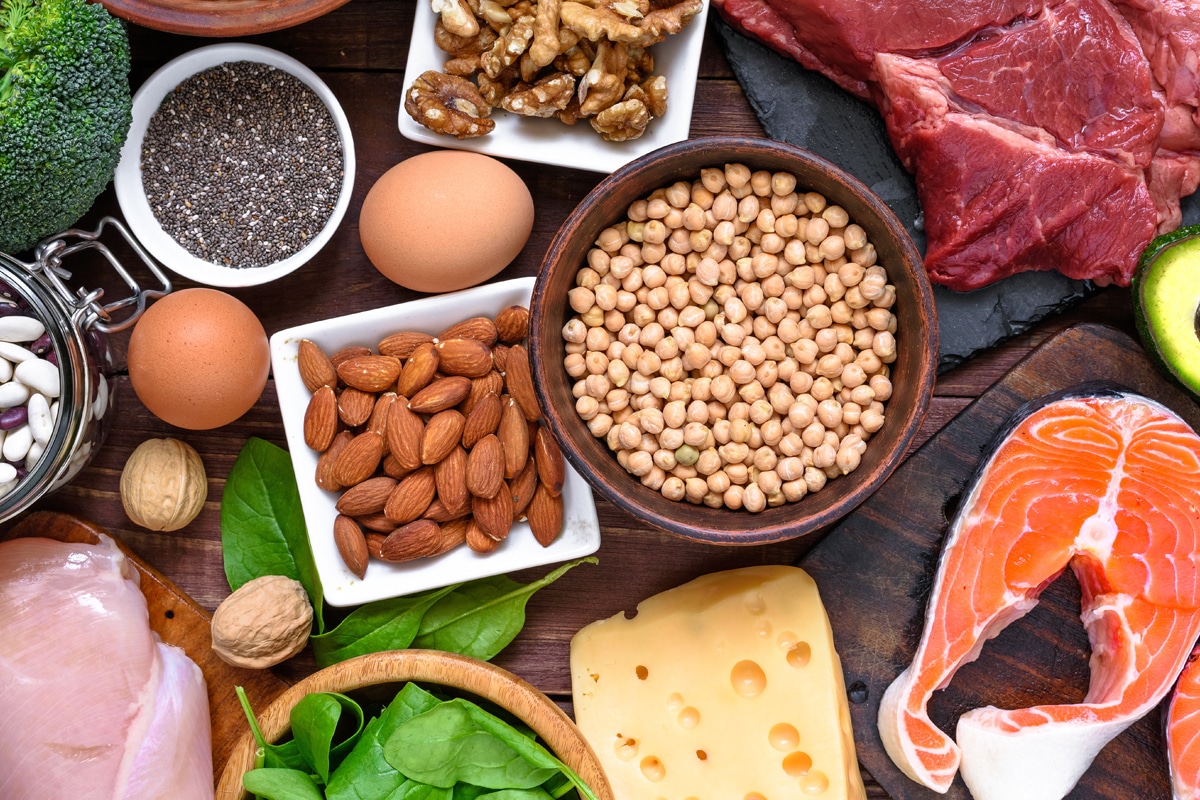
- Eat More Protein. Yes, More Than You Think
Most people aren’t eating enough protein, especially when they’re eating less overall. You want to aim for 1.0 to 1.5 grams of protein intake per kilogram of body weight every day. For someone who weighs 150 pounds, that’s about 70 to 109 grams a day.
Spread it out over the day. A good rule? Try to get 25 to 30 grams at every meal. That’s what helps your body increase muscle mass and support muscle growth.
Good sources of protein? Lean meats, chicken, turkey and fish. Try more plant based proteins that support not only your muscles but your overall health as well. Try eating more edamame, legumes, tofu and tempeh. Low fat dairy like Greek yogurt, cottage and ricotta cheese can also be protein options you can incorporate throughout your day.
- Start Building Strength and Protect Your Muscles
Resistance training helps signal to your body that it needs to hang on to muscle. A good place to start is to exercise two to three times a week. And no, you don’t have to join a gym or lift heavy weights. Think: bodyweight squats at your kitchen counter, light dumbbells, or resistance bands. Simple exercise can make a big difference.
The point is to use your muscles so your body knows to keep them.
Not only does exercise support strength, but it also boosts energy expenditure, which helps preserve lean mass while promoting fat reduction.
- Eat Foods That Support Your GLP-1 Levels Naturally
While the meds do the heavy lifting, there are foods that can support your body’s natural GLP-1 production:
- Oats, barley, and quinoa
- Beans and lentils
- Leafy greens like spinach and kale
- Apples, pears, and berries
- Nuts and seeds
These foods are fiber-packed, slow to digest, and help you feel full longer. Plus, they’re good for your gut which plays a big role in hormone regulation.

- Don’t Sleep on the Basics
Staying well-hydrated is essential for muscle function. Muscle tissue is composed of approximately 75% water, and even mild dehydration can impair endurance and performance. A study conducted by the United States Army Research Institute of Environmental Medicine found that moderate dehydration reduced muscle endurance by 15% in physically active individuals.
Hydration also plays a role in nutrient transport, joint lubrication, and temperature regulation—all vital for maintaining muscle health. Alongside adequate fluid intake, ensure you’re consuming sufficient calcium and vitamin D to support bone health, as muscle and bone integrity are closely linked.
And don’t forget about calcium and vitamin D. These two are critical for bone strength, especially during rapid weight loss. When muscle and bone both take a hit, your risk of falls and fractures goes way up. Supporting one supports the other.
- Don’t Try to Figure This Out Alone
I say this with love: Google is not your coach. Rapid weight loss on GLP-1s can be a completely different experience than what you’ve dealt with before. And while protein is important, it’s not the only piece of the puzzle.
To protect your muscle and feel your best while the number on the scale drops, you need to be eating enough and from a variety of food groups.
Your body needs carbohydrates for fuel, healthy fats for hormone balance and brain function, fiber for digestion, and essential vitamins and minerals to support everything from metabolism to immune health.
Without enough of these nutrients, rapid weight loss can turn into muscle loss, fatigue, and nutrient deficiencies you didn’t see coming.
This is why working with a professional matters. If you’re unsure how to structure your meals or how to move in a way that supports your body as it changes, get support. A Registered Dietitian like myself, can help you build a plan that supports your lifestyle and long-term goals.
Weight Loss Drugs Are a Tool, Not a Miracle
Let’s get one thing straight: GLP-1 injections like Ozempic and Wegovy can be helpful, but they are not a miracle solution.
They work by mimicking a hormone in your body that helps regulate appetite. You feel full sooner, you eat less, and yes, you drop some pounds. But here’s the catch. If you don’t change the habits and lifestyle patterns that led you to struggle with weight in the first place, the results won’t stick.
This is a jump start, not a finish line.
Weight loss that lasts comes from more than a weekly injection. It comes from fueling your body with real food, building muscle with movement, getting good sleep, and managing stress without raiding the pantry.
You can’t out-medicate a lifestyle that’s out of balance.
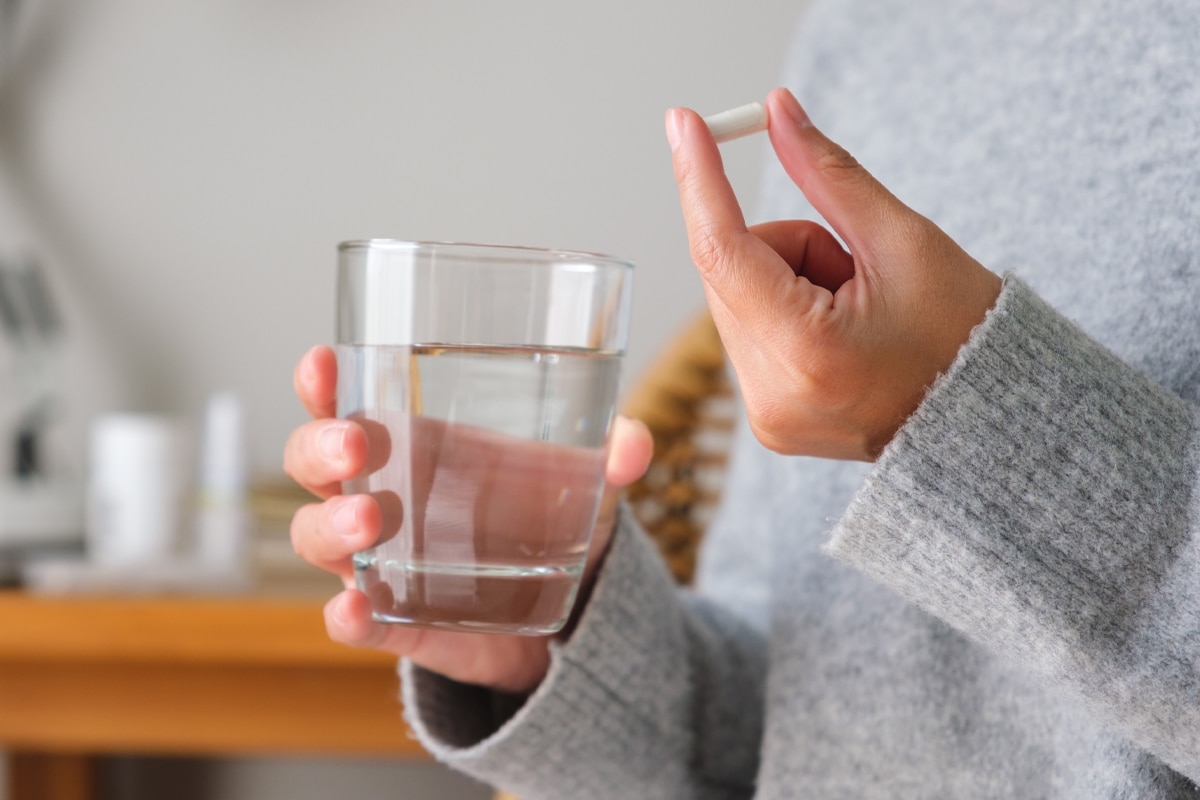
In my practice, I’ve seen weight loss happen. I’ve seen clients shed pounds and feel better than they have in years. But the real success stories? They happen when the medication is used as a short-term tool, not a lifelong solution.
Relying on these drugs for the long haul comes with real risks. Physically. Emotionally. Financially. That’s not a path I want for my clients. When we treat the medication as the entire plan, we miss the chance to build the habits, awareness, and confidence that lead to true, lasting change.
The deeper work still needs to happen. The patterns that lead to overeating, the emotional triggers, the years of dieting and rebounding all need to be unpacked. Then we replace them with skills that actually stick.
That’s where I come in. My job isn’t just to help you let go of extra weight. It’s to help you feel strong, nourished, and fully in charge of your relationship with food so you never feel like you have to depend on a prescription to feel like yourself.
You Deserve More Than Just a Smaller Body
Let’s be honest, the world has spent way too much time telling you that your worth is tied to the number on a scale. I’m here to call that out. You don’t need to shrink yourself to be healthier (or happier). You don’t need to disappear to feel better in your skin.
You need strength. You need vitality. You need to feel like your body is working for you, not against you.
That’s what real, sustainable health looks like.
GLP-1 medications can be part of the journey, but they’re not the whole story. And you shouldn’t have to figure out that story alone.
I’m not here to scare you or shame you. I’m here to give you the full picture, the information that isn’t always in the headlines or talked about as a patient in the doctor’s office.
You deserve to make informed choices, and you deserve support that’s grounded in science, compassion, and real-life experience.

Ready to Protect Your Muscle and Your Mojo? Let’s Talk.
If you’re on GLP-1 meds (or thinking about it) and wondering how to protect your strength and bone health while still seeing results, you’re not alone.
As a Registered Dietitian, I help people rebuild trust with their bodies, improve their relationship with food, and support the kind of strength and functional ability that lets them keep doing the things they love every day. Weight loss might happen along the way, but it’s never the whole story and it’s never the only goal.
Book a free discovery call with me today.
Let’s make sure your progress isn’t coming at the expense of your power, your confidence, or your long-term health.
Because you deserve more than a smaller number on the scale. You deserve to feel strong, steady, and unstoppable!





